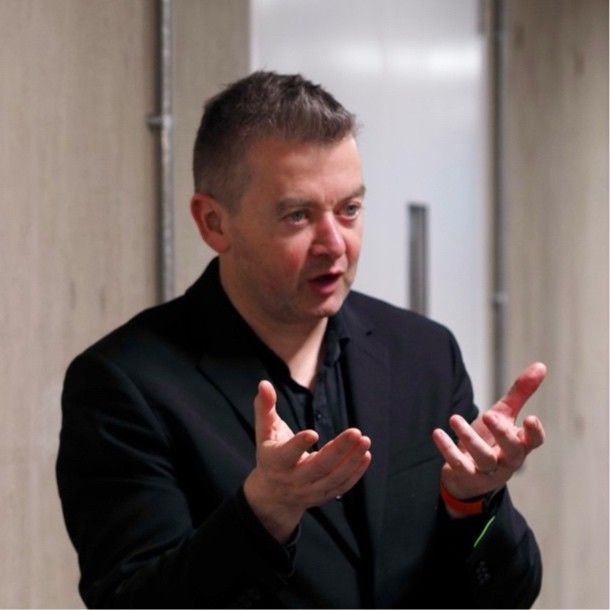How John Willshire uses Buttondown
John uses Buttondown to keep customers, fans, and prospects apprised of updates to his Shopify store and consulting practice

Tell me a bit about yourself and your background.
My name’s John V Willshire! I founded Smithery (a Strategic Design Practice) in 2011.
Not long after starting Smithery, I came up with Artefact Cards as an experiment, and it became a side project that kept going.
So now we run both businesses, though the former is where the money comes from really, the latter pays for itself and a bit more. But they are related – I know that the Artefact Cards stuff has got us some work with Smithery.

What do you write about?
Interestingly, I’ve brought together three older email lists under this one:
- an old Smithery one,
- the Artefact Cards one from Mailchimp,
- and one from Tinyletter that was daily drawing prompts.
Now, I position it as 'a collection of small pieces, loosely joined’, and cover Smithery and Artefact ones all in a single place. I’m also leaning in to it more about being a newsletter sent by me, rather than from either of the businesses.
I prefer Newsletters written by a person with a perspective. They’re certainly the ones I open and read more.
What made you decide to unite the brands, so to speak?
Firstly, I guess I prefer Newsletters written by a person with a perspective. They’re certainly the ones I open and read more. And given I’m notionally behind two things, I thought just having one perspective on that stuff would be better.
Secondly, practically, it gives me just one thing to write...

What inspired you to get started?
So, the longer version of the story —
I was Chief Innovation Officer at a Media agency before starting Smithery. I started a blog there back in 2007, and pivoted it to be the company website.
Because of the role, and the time I was doing it (2007-11), I was fairly invested in the core Web 2.0 emergence of social networks (Twitter, Tumblr, Instagram, Foursquare etc etc), and basically played around with lots of different platforms, exploring how communication was evolving.
It became apparent after starting Smithery that the ‘promise’ of social networks was being undermined by the commercial imperatives of the platforms, and so ran with the idea that newsletters, podcasts (and things you could subscribe too) would become increasingly important for creators: I wrote about that more here.
In that 2015 essay, you write about the promise of delivery from our social networks. What do you think has changed since then?
It especially resonates in the last few months, when Twitter structure has… changed, shall we say, and now engagement has basically plummeted off a cliff. So making connections, and making the media that supports those connections, has changed. Video is very much to the fore (I’ve done a few things on this, like here), there’s probably still a place for picture-based networks at the moment, but the broad generic post anything platforms seem to be dying off.
I did always think that these were training wheels for the social web - you need them to understand how social networks function, but then people will retreat to smaller communities afterwards.
So longer-form writing on blogs (or Medium) is less useful now than ever, because where do you push the links? We’re perhaps entering the age of being ‘famous for fifteen people’.
Newsletters, and subscriptions to them, are a better route now than having a blog. BUT – and I touched on some of this here the other week – we miss the macro picture when thinking in about the micro benefits.
What happens when EVERYONE is ONLY writing a newsletter?
That’s a lot of reading, and a lot of inbox to get through...
Where did you first learn of Buttondown, and what made you decide to give it a try?
From my friend Dan Hon - I'd looked at Substack for a bit, but then there was some wheeze they pulled which left with thinking I didn't want to host a newsletter there. I liked Buttondown’s starlight down the line approach, and there was something about it that made me think it’d slipped through from an alternate timeline where the web unfolded differently.
I’ve realised that things like IA Writer, where I can remove as much as possible from the background noise of the modern work reality, really helps the writing process for me.
What are some ways Buttondown has helped you run your publication?
Easy set up, ingestion of existing lists, etc. Much easier to just write than previous experience on Mailchimp. I’ve realised that things like IA Writer, where I can remove as much as possible from the background noise of the modern work reality, really helps the writing process for me. The co-operative help process you provide, and naturally get, with small entities online.

What are some things you’d be excited to see Buttondown build in the next few months?
Hmmm, good question - I also have to sort out various systems I use for PKM, collecting signals, that sort of thing, over the next month or so. I wonder if there are interesting ways to connect some of that stuff automatically into the bottom of etc newsletter somehow.
What advice would you give to someone starting their own newsletter?
“Be you, because everyone else is taken” - I can’t remember who said that, but yeah, seems legit.